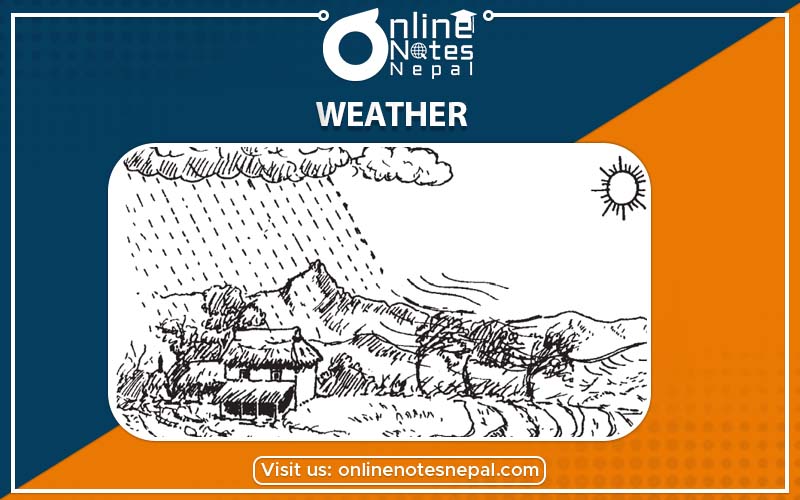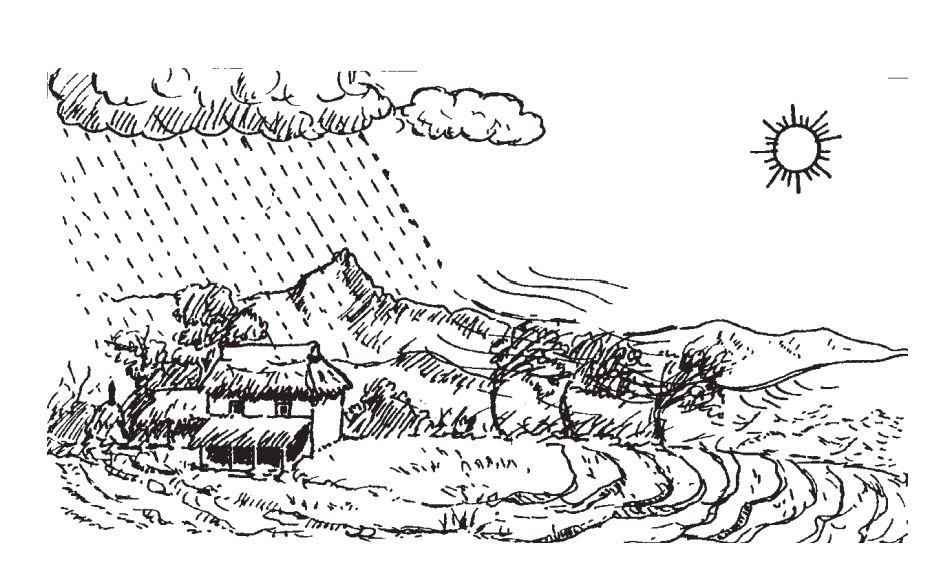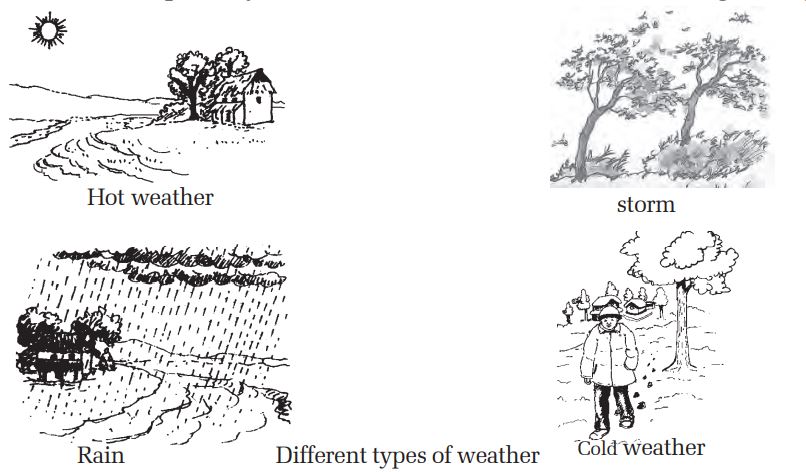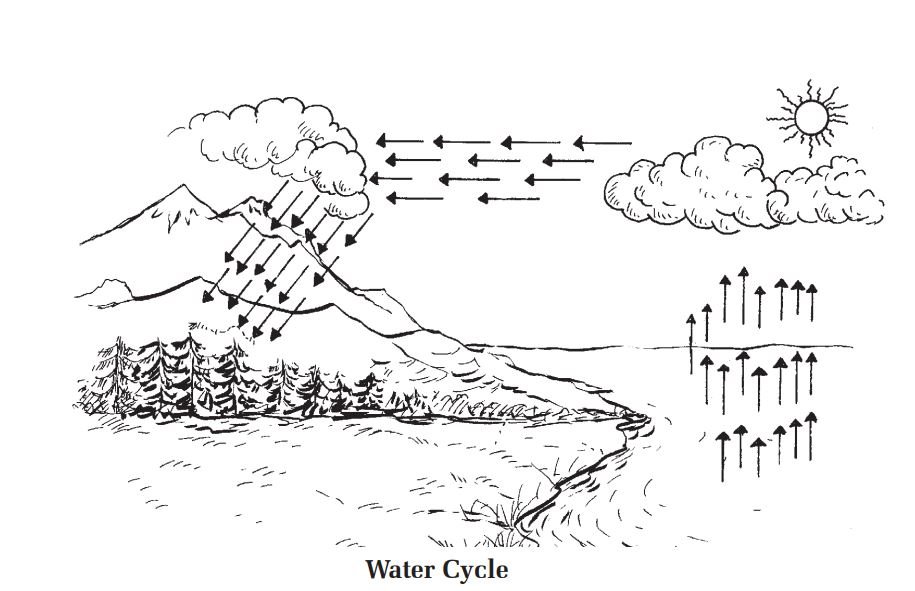Published by: BhumiRaj Timalsina
Published date: 02 Feb 2022

When we observe the sky, either we find cloud or sun. Some times there is rain or blowing air. Such conditions cannot be remained stable forever. Immediately after the cloudy day, it may become sunny day. Immediately after the sunny day, it may become windy and rainy day. Such varied condition of the atmosphere is called weather. The change in temperature, pressure condition of wind and rain, humidity etc of a particular place is called weather of that place. Being cold, hot, cloudy day, sunny day, rainy day, etc. are the different types of weather. Weather changes with time. The effect of weather seems in a small region of the earth. It may be a cloudy day in the neighborhood of a sunny day. In the same way it may be raining in another place. The duration of the weather is short and uncertain because it changes even with very short interval of time.

The condition of sun light, water, wind (air), temperature, humidity etc of a particular place for a short interval of time is called weather.
The weather depends upon various factors, Sunlight or position of the sun, speed of wind, water, temperature, humidity of air, rain, cloud etc are the factors that affect the weather. Here we will have short discussion about the affect of temperature, relative humidity and rain in the weather.
The sun is the main source of energy. When the sunlight falls on the surface of the earth normally, there is rise in temperature. Movement of air is caused by the change in temperature in the earth surface and atmosphere. Being hot, cold, blow of air and storm etc are the effects of temperature.
Presence of water vapour in air or its moisture is called humidity. The ratio of the actual amount of water vapour (absolute humidity) present in the air to the saturations point at the same temperature is called humidity. It is expressed in percentage. Higher the relative humidity, more the moisture of the air. Generally the relative humidity closer to 100% indicates the possibility of rain. The weather becomes wet or dry due to moisture in the air.
When water particles in the cloud are combined to form bigger size it can not be held in the cloud. Then it falls towards the earth in the form of water drops. It is known as rain. The rain also affects the weather even the rain itself is a condition of the weather the effects like (decrease) fall in temperature, humidity and others effects can also be seen due to rain. Water droplets in the form of cloud cast shadow on the earth which causes cold weather on the earth.
There are different types of weather. As mentioned above the condition of atmosphere in the short interval of time is the weather. Being hot and cold, storm, dryness, cloud formation, raining etc are the different types of weather. Specially the weather is classified into following four types.

When the sunlight falls normally and the cloud does not block it, there is hot weather at a place. During this time, the earth’s surface as well as the air closer to it get heated up. Since the hot air rises up and cold air moves down there is blowing air in such weather. Consequently it can be felt very hot. The air in this weather is dry because of the evaporation of water vapour on the earth’s surface due to the heat from the sun.
In the condition when the sun is blocked by the cloud or is the cloudy weather, there is low temperature and dim light on the surface of the earth. When there is cloud in the sky during the summer season we (experience) feel cool but we feel cold in the same condition during the winter season. Sometimes there may be speedy wind unexpectedly. Specially during the intensed sunlight, there can be speedy wind because of increase in speed of the wind. The speedy wind is called storm.
As the storm in the winter breaks the branches of the trees, up roots trees blows away the roofs, it is very disadvantageous to us. If there is a large amount of moisture in the cloud, it changes into water drops and it may cause rain. There is heavy rain fall in the rainy season whereas it rarely rains in the winter season. Since the plants grow properly during the rainy season, it is considered better for the plants. The rain fall in the summer season gives somewhat relief from the hot. The heavy rain may cause soil erosion, floods and land slides etc.
The water from the sea, lake, pond, river, etc reaches to the atmosphere in the form of water vapour due to the heat from the sun. Since this water vapour is lighter, it rises up. As the vapour rises up, it keeps on condensing. When condensation of water vapour takes place, the water particles get collected to form cloud. As the water vapour rises upto the significant height whole the vapour gets condensed to change in the form of water droplets. When the water droplets combine to form bigger drops, it cannot be held in the atmosphere and finally fall down to the earth’s surface. This is called rain fall.

This rain water gets collected again in the sea, lakes, rivers, ponds etc. This process is continuously repeated in the same way. Thus change of water on the earth into water vapour due to heat from the sun and returning back from the atmosphere to the earth again after the condensation is called water cycle. For the determination of types of weather and weather change, the water cycle plays a vital role.